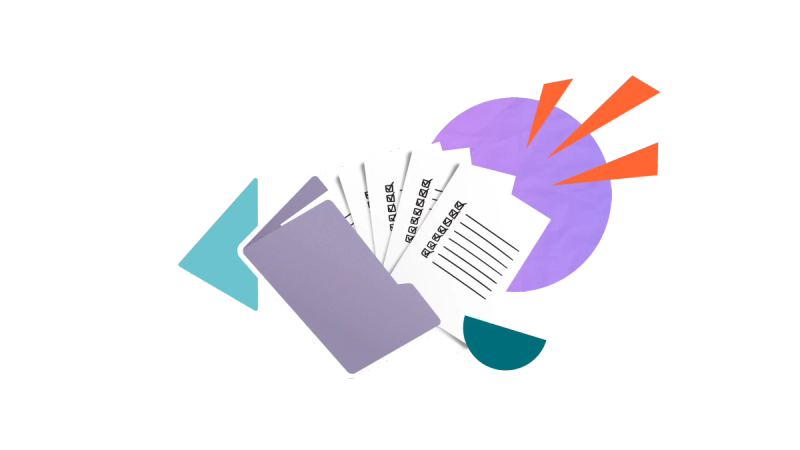How to create a business requirements document in 6 steps
Share on socials
How to create a business requirements document in 6 steps

Jump to Section
Jump to section
What is a business requirements document?
What's in a BRD?
Why you need a BRD
How to create an effective BRD
If you want your project to succeed, don’t forget to create a business requirements document! Here’s how.
Are you planning a new project? Don't start without learning how to create a business requirements document.
A business requirements document is so important that if you get the perfect template, you can align stakeholders and streamline decision-making with such ease that you'll never look back. If you’re exploring platforms to use, read our article on using Confluence for project management.
What is a business requirements document?
A Business Requirements Document (BRD) is a detailed document that provides all the requirements and specifications for a business project or process. Using a BRD, multiple teams and individuals can understand the roadmap and requirements of any project without prior knowledge.
The ultimate purpose of a BRD is to give complete clarity around a project, no matter what your level of understanding is. Without a good BRD, teams can work against each other, misunderstand project goals, or duplicate work.
What’s in a business requirements document?
A business requirement document’s contents can change, but they generally include the following elements:
- Project overview: Gives an outline of the project. It discusses the project purposes, goals, and what problem it aims to solve.
- Scope: Explains what is and isn’t included in the project. It aims to prevent scope creep (which is when a project gets out of hand).
- Stakeholder information: Identifies all stakeholders in the project, their roles, and how involved in the project they are.
- Requirements: Details the different aspects the end product will have. It is split into two subsections.
- Functional requirements: This includes essential features and requirements of the end product.
- Non-functional requirements: This includes other aspects of the end product, such as performance expectations and user experience (UX).
- Functional requirements: This includes essential features and requirements of the end product.
- Constraints and assumptions: Addresses any limitations that might impact the project.
- Risks and mitigations: Highlights specific risks that may arise during the project, and offers solutions to reduce the risk.
- Project timeline: Provides a timeline of works with specific deadlines and benchmarks, so teams can track their progress.
- Approval and sign-off: A formal declaration by stakeholders to approve of the project and its outcomes.
Why you need a business requirements document
Typically, the role of a business requirements document is to improve project management, but you don't need to be a Project Manager to use one. Any business activity can involve multiple stakeholders, and every project needs firm management to stay on track.
- Give everyone a clear point of reference: A BRD lays out the goals and aims of a project from the start, as well as the people who will be involved in it. It's designed to adapt and change as you get more information, and you can refer to it often as your project develops.
- Ensure clarity across teams: Regardless of a project team member's seniority, technical skills or level of involvement, a BRD is a logical, clearly-written document that anyone can understand. Ensuring clarity and alignment within a team is its core benefit.
- Promote project success: By removing ambiguity from your project, a business requirements document helps to give everyone the important information and help teams make the right decisions faster.
Essentially, you need a BRD if you struggle to ensure a project launches with a clear scope, or if projects launch too soon without meeting all their goals.
How to create an effective business requirements document
To craft a successful BRD, begin with a blank document or sheet of paper.
- Write down the project as you understand it, following the outline below in the Components of a BRD.
- Schedule individual time with the most apparent key stakeholders, ask for their input individually, or meet as a team.
- Identify discrepancies and gaps between the interviews or identify missing stakeholders.
- Arrange a follow-up meeting to cover new ground and highlight differing opinions to improve the business requirements document.
- To ensure your BRD is written in clear and concise language, give a copy to a team member uninvolved in the project to get their take.
- Ensure the document is stored safely, editable, and referred to on an ongoing basis. Undertake regular reviews and revisions as the project evolves or new information emerges.
Components to include in your business requirements document
Don't scrimp on the time you allocate to complete a well-structured BRD. Here are the items you'll want to detail.
Project Overview: Start with a high-level project summary, providing a snapshot of the objectives and scope to show the project's purpose and ownership.
Example: "Our goal is to create a mobile app for e-commerce that can sell our shoes anywhere in the world. Our top features will be…"
Stakeholder Analysis: Identify the key individuals or groups with an interest in the project and their needs, expectations, and influence on the project's success.
- Example: "Stakeholders include the Head of Marketing, IT Director, Head of UX and the CFO. The IT Director will influence technology selection, data security, and system integration decisions...”
Objectives: Add top-level goals and intended outcomes to ensure everyone understands what success looks like.
- Example: "The objective of the app is to increase online sales revenue by 20% within the following year.
Functional Requirements: Specify the features and capabilities of the project.
- Example: "The app must allow customers to make secure online payments." or “The new store will be staffed with 3 members at all times.”
Additional Quality Requirements: Quality requirements go beyond functionality and encompass performance, security, and scalability.
- Example:"The app must be secure and capable of supporting over 500 users without a significant drop in performance." or “The store should be capable of accommodating up to 100 customers at any given time.”
Assumptions and Constraints: What could affect the project's execution? Budget, time or team issues could hold you back.
- Example:"We have a fixed project budget that cannot be exceeded, which may represent a constraint."
Use Cases: Use cases are scenarios that describe the project's effects.
- Example: An image of a customer app journey through to completing a successful purchase would be an example of a use case for tech, as would a journey detailing a store security system or ‘customer flow’.
Acceptance Criteria: This will be well used, so spend time planning your acceptance criteria! It clearly defines the conditions that must be met to accept project delivery.
- Example: This approach avoids one team 'pushing' the project live when it's not considered complete. "The app must load product pages within 2 seconds." , “The store must safely hold 100 customers.”
Business requirements documents are indispensable in project management, but in any business, they can provide clarity during decision-making. A well-written BRD offers you a chance to align with team members and create a roadmap for project success.
We create tools to help people work efficiently
Check out our Confluence Apps to see how we can help you with your workload - start your free trial today.
Written by

Content Writer
Helen is a freelance content writer specialising in Software as a Service (SaaS). She has a BA Hons degree in English, a Chartered Institute of Marketing qualification, and over ten years of experience in content marketing.



